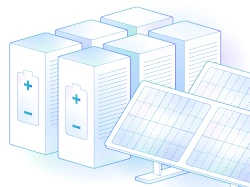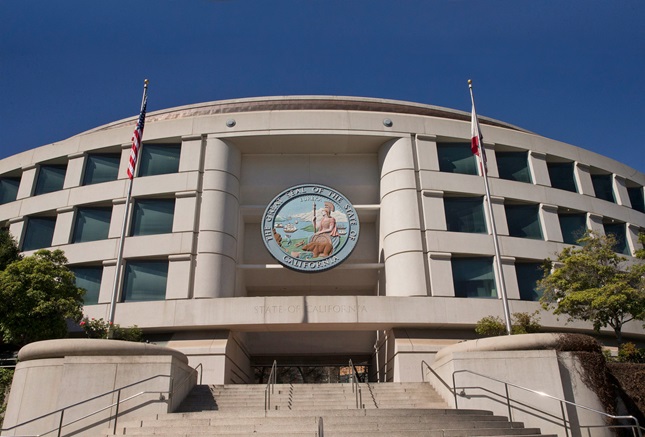On December 13th the California Public Utilities Commission (CPUC) issued its highly anticipatedProposed Decision (PD) on California’s successor net metering tariff: NEM-3. The PD proposed to radically overhaul the state’s current Net Metering program, most notably by slashing the export compensation rate and basing it on Avoided Cost Calculator (ACC) values, levying monthly fixed “Grid Participation Charges” on residential customers based on their solar system size, using instantaneous netting to count exports, and retroactively reducing the grandfathering period for NEM-1 and NEM-2 solar customers to 15 years. Given that these changes are expected to be implemented next year, solar and energy storage developers are racing to understand how this new “Net Billing” policy could impact the economics of their projects.
It’s important to note that the changes laid out in the PD are not yet approved or final. Solar industry advocates unanimously condemned the PD, warning that if would crush the state’s solar market and clean energy goals, resulting in lost jobs. The PD favored many of the concepts and proposals put forward by the investor-owned utilities (IOUs). It is widely expected that the PD will see changes before getting its final approval from the CPUC. Solar industry trade associations, such as CALSSA, SEIA, and Vote Solar are urgently seeking to get changes implemented, which would need to happen over the coming weeks.
A Summary of the Key Issues in the PD
Export Compensation Rate
Under California’s current net metering tariff “NEM-2”, solar customers receive the full retail rate, minus non-bypassable charges (NBCs), for all energy exported to the grid. The Commission states within its recent Proposed Decision that NEM-2 “negatively impacts non-participating customers, is not cost-effective, and disproportionately harms low-income ratepayers”, with one of the leading causes being the rate at which solar customers are compensated for excess generation. Below is a look at how the new export compensation rate would be calculated and implemented:
- The rate at which a solar customer would be compensated for electricity exported to the grid would be based on averaged monthly avoided cost values, derived from the ACC, with a differential between weekday and weekend (e.g., the hour of 4-5 pm will have the same export value assigned to it for each weekday in the month of August).
- Residential and non-residential customers will have the same export rates.
- Export rates will be locked in for a five-year period following interconnection. Following the lock-in period, values will be based on the ACC adopted as of January 1.
- Export rates will vary per California’s 16 different climate zones.
- Under NEM-2 the export rate currently averages around $0.24/kWh, under the current NEM-3 proposal it would shrink to around $0.05/kWh.
Grid Participation Charge
In the originalJoint Opening Testimony, the IOUs included a fixed monthly solar fee, labeled “Grid Benefits Charge”. The CPUC has included this charge within their PD but has renamed it “Grid Participation Charge” (GPC). The $/kW fee will be calculated based on system size and only assessed to residential customers; non-residential and low-income customers are exempt. The initial Grid Participation Charge value is set to remain in effect for five years, after which the charge will be reviewed during the CPUC’s pre-established five-year tariff evaluation. Customers that take service under NEM-3 during the first five years the successor tariff is in effect will lock in the introductory Grid Participation Charge amount of $8/kW for a period of 10 years. For an average-sized 6 kW system, this would equate to $48/month, or $576/year in GPCs, which are in addition to other fixed charges on certain rate schedules. After this 10-year “grandfathered” period, customers will be subject to the current charge at that time and which may fluctuate.
Market Transition Credit
“Market Transition Credit” (MTC) was first coined by Energy and Environmental Economics, Inc. (E3) within its study titledAlternative Ratemaking Mechanisms for Distributed Energy Resource in California. The CPUC contracted E3 to conduct this study to provide the parties participating in the NEM-3 proceeding with information that would help guide the creation of viable successor tariff proposals. The PD included an MTC as summarized below:
- Like the Grid Participation Charge, the Market Transition Credit is a $/kW value based on the installed system size.
- Available to residential and low-Income customers, but currently there is no credit for the non-residential customer segment.
- New construction customers required to install solar due to the requirements of the2019 update to the Title 24 Building Energy Efficiency Standards are not eligible to receive the credit.
- Available for only the first four years of NEM-3 tariff implementation.
- The CPUC has labeled this credit a “glide path”, meaning that the $/kW credit value will decrease each year by 25%, reaching zero after year four.
- Customers will receive this credit for a period of 10 years from the date of interconnection.
- The credit will be a line item each month on a customer’s bill and can be used to offset all charges. Any unused credit amount will be applied to future bills until all the credit has been utilized.
Import Rate
Like the criteria of NEM-2 which requires customers to elect service on a time-of-use (TOU) rate, the CPUC’s Proposed Decision states that Residential customers will be placed under a specific predetermined TOU rate. The IOUs will have the ability to create an entirely new rate to designate as the “default” rate for NEM-3 customers should they choose to do so. The existing rates that are initially eligible are:
- PG&E: EV2-A
- SDG&E: EV-TOU-5
- SCE: TOU-D-PRIME
Customers do have the ability to elect service under a critical peak pricing (CPP) or peak day pricing (PDP) rate as this is currently only an option for SCE net metering customers. Low-income and Virtual Net Energy Metering (VNEM) customers may elect service under any time-of-use rate. The PD does not indicate whether there will be any rate requirements for non-residential customers.
NEM-2 Grandfathering
To lock in NEM-2 and secure grandfathering protections, it is still our assumption that submitting an interconnection application will be the means to determine eligibility, although that was not explicitly stated in the PD. We expect this issue to be clarified in the coming weeks. Below are the key takeaways from the Commission’s PD regarding NEM grandfathering:
- The CPUC will implement a NEM-2 “sunset” 120 days after the adoption of the NEM-3 decision. Currently, a Final Decision is set to be released on January 27th, meaning that after May 27th no additional customers will be able to take service under NEM-2.
- Customers that submit an interconnection application after the sunset date will temporarily be billed under the NEM-2 tariff but will be transitioned to the successor tariff once it is operationalized (no later than 12 months after the adoption of NEM-3).
- The 20-year grandfathering or “legacy” period for existing NEM-1 and NEM-2 residential customers will be shortened to 15 years. Commercial customers are exempt. Customers that establish NEM-2 service prior to its closure will also be subject to the shortened grandfathering period.
- Existing NEM-2 customers can earn a storage rebate if they voluntarily switch to NEM-3 within the first four years of implementation. The incentive level will be initially set at $0.20/Wh but will decrease by 25% each year.
Other notable issues
- Implements instantaneous netting to count exported energy, instead of the current averaged interval netting of 15-minutes for commercial and 60-minutes for residential.
- Allows Net Billing customers to oversize their systems by up to 150 percent of the customer’s historical load to allow for future vehicle and appliance electrification.
- The PD kept the NEM true-up period as annual but switched from annual to monthly billing. This means that each month any unused credits will roll forward and apply to future bills within a 12-month period, but any incurred charges must be paid monthly.
- Establishes a Storage Evolution Fund to provide storage rebates to existing NEM 2-0 customers who move to the NEM-3 within the first four years and who add storage systems to support the grid and become more resilient to natural disasters.
What’s next?
Parties to the proceeding will submit Opening Comments in response to the CPUC’s Proposed Decision by January 2nd with Reply Comments due no later than 5 days after. Clean energy advocates are actively lobbying both the CPUC and Governor’s office to get either an Alternate Proposed Decision issued or get significant changes made to this current PD.
The earliest possible final vote on this PD is January 27th, 2022. If approved at that scheduled meeting, the NEM-3 Net Billing tariff could become effective as early as May 27th, 2022, which is 120 days after the final decision. Those dates are highly unlikely, given the widespread revolt to the PD and intense lobbying efforts currently underway. It’s difficult to predict how long of a delay there would be in approving and implementing the Final Decision. To be 100% certain of locking in NEM-2 and securing 15 years of grandfathering customers would need to have their completed interconnection application submitted by May 27th.
Can I Model NEM-3 Scenarios in ETB based on the PD?
Energy Toolbase users have been modeling different variations of the NEM-3 tariff on the ETB Developer platform for several months. In a previous blog, we detailedhow to Model NEM-3 Scenarios in ETB Developer, and the Mechanics of how Avoided Cost Calculator (ACC) Export Values are Determined. However, there are some novel, new elements within this PD that would require ETB to build additional functionality to precisely model scenarios, including using hourly ACC values for exports, having ACC values lock in for 5 years, and then float thereafter, and instantaneous netting of exports. That said, we do believe our current functionality enables users to directionally accurately model NEM-3 scenarios based on the December 13th PD. For example, with regards to utilizing hourly averaged ACC values, we believe that using our current ACC TOU window weighted averages methodology, would arrive at a directionally similar result.
Our policy team has been actively engaged in the NEM-3 proceeding over the last year. We believe there is a very high likelihood that the PD will change, possibly materially, over the coming weeks. Therefore, we are in wait-and-see mode to see exactly what changes get made to the PD and adopted by the CPUC when they vote on the final NEM-3 tariff. When the PD gets finalized by the CPUC the ETB product, rates, and engineering teams will move swiftly to implement necessary features and workflows to precisely model NEM-3 projects. We will provide updates to our userbase as they become available.

